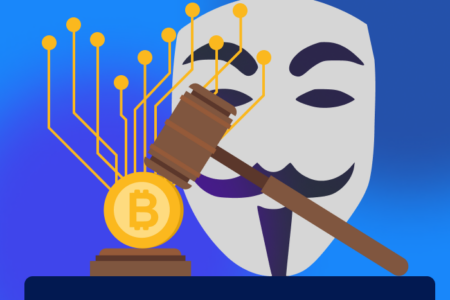Altcoins
The term “altcoins” is a shorthand for “alternative coin” and refers to all digital coins other than bitcoin.
Therefore, the question “what are altcoins in cryptocurrency” can be answered as follows: these are all coins, except for BTC and tokens (because the latter do not have their own blockchain and can be issued centrally).
What is altcoins in simple terms
After having analyzed the search queries for the term “altcoins”, we have come to a conclusion that the Internet users have a very vague idea of them. Some people think that altcoins are some special digital assets that can be traded. Some people call NFT altcoins.
And the requests “how to buy altcoins”, “how to mine altcoins”, “where to store altcoins” have convinced us that it is time to open an educational program academy.
In fact, altcoins are all cryptocurrencies created after 2009, when Satoshi Nakamoto mined his Genesis block of bitcoin.
According to coinmarketcap, 8860 digital coins have been created at the beginning of 2022. (In fact, there are many more, because the service only tracks significant projects on official blockchains.)
Altcoins are created by both enthusiastic beginners and experienced development teams, trying to find the “golden formula” for a universal cryptocurrency.
The fate of coins develops in different ways. Some of them quickly disappear in less than a year, others are actively developing as multi-task projects.
All altcoins solve the problems inherent in bitcoin:
- “heavy” blockchain and, as a result, slow transactions;
- energy-intensive mining;
- not guaranteed anonymity;
- high volatility;
- functionality restrictions
System capabilities of altcoins
Each cryptocurrency alternative to bitcoin makes up for some of its shortcomings and presents this as the main idea of the promotion. They differ in transaction speed, encryption method, and mining method.
Altcoins in the cryptocurrency list can be divided into several groups:
- Coins with high transaction speed. These include easily scalable Ripple, NEM, Nano, Tezos, Tron, Solana.
- Anonymous. Have a masternode on discovery that hides the path coverage of the address of the sender and recipient of the payment. These are Zcash (and it’s fork Komodo), SmartCash, Monero, Verge, Dash.
- Stablecoins. These are altcoins, the price of which is tied to the exchange rate of a fiat currency or some physical asset. They are used to hedge risks in high volatility conditions and as service coins of crypto exchanges. These include BUSD, BGBP, Tether Gold, Tether USDT, USD COIN, BNB.
- System coins on multifunctional blockchains. These include Ether, EOS, Stellar, which are the native coins of platforms for creating smart contracts.
Why altcoins depend on bitcoin
We figured out what altcoin is and it’s time to talk about their close relationship with BTC.
Altcoin prices always correlate with the dynamics of the BTC/USD cryptocurrency pair. This effect is called the dominance index (or the bitcoin dominance). It is calculated as a percentage and shows the share of BTC in the total capitalization of cryptocurrencies. If the indicator drops below 49%, this is a signal that investors are redirecting assets to altcoins and a sharp rise in the altcoin market segment is possible. A 1% loss in the total market value of bitcoin will give a 10% gain to altcoins. And it’s a good moment to pay attention to new projects – this is where the money of large investors is directed to.
When altcoins fall in price, the cryptocurrency can only lose its overall capitalization level, if the market crashes. In other cases, the assets will be invested in the “gold reserve” of investors – bitcoin.
Why does it happen? Because the amount of funds in the crypto market is conditionally limited. This is similar to the law of conservation of energy – if bitcoin has decreased, then altcoins will arrive for traders. And vice versa.
How to buy and where to store altcoins
You can buy altcoins on cryptocurrency exchanges. The most popular altcoin trading platforms are:
- Binance
- Coinbase
- Bitmex
- Kraken
- Bybit
- Huobi
- Exmo
You can store altcoins on cold wallets (also known as cold storage) on cryptocurrency exchanges and in personal digital safes. The choice of a private wallet depends on the amount of the asset to be saved and the expected timing of its savings.
For long-term storage of valuable altcoins, the best option would be hardware wallets: Ledger, KeepKey, Trezor, CoolWallet Pro. They have a high level of protection, the ability to keep several dozen different altcoins in one place. The only drawback is the high price of the gadget (from $150 and above).
Desktop and mobile versions of wallets are great for storing small amounts in altcoins: Guarda, TrustWallet, Exodus (for PC) and Jaxx, MyCelium, Airbitz wallet (for smartphones). The choice of wallet in this case depends on the type of coin. The list of supported altcoins can be found in the application itself.
Thanks to decentralization and the growing interest in blockchain, the emergence of new altcoins is inevitable. Therefore, the list of more than 8500 titles will eventually grow.
In this situation, traders should be very attentive to new coins, because ⅓ of them have all the signs of a scam.
Choosing new altcoins for trading is always a difficult quest that requires preliminary analysis and caution.




